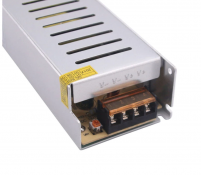Cornelius
New elf
- Joined
- May 11, 2019
- Messages
- 12
I've got a 12V PSU running to a 6 way fuse box, then that to my DC barrel connectors and out to the LEDS with various injection points.
Right now I have one cable running from the V+ and one from the V- running to the fuse block. Is there any added benefit (or bad idea) to running a second cable from the V+ and V- into the fuse block?
See images attached. And Thanks!
(12V 360W, running 15M of WS2811 (It's what I had laying around)).


Right now I have one cable running from the V+ and one from the V- running to the fuse block. Is there any added benefit (or bad idea) to running a second cable from the V+ and V- into the fuse block?
See images attached. And Thanks!
(12V 360W, running 15M of WS2811 (It's what I had laying around)).



